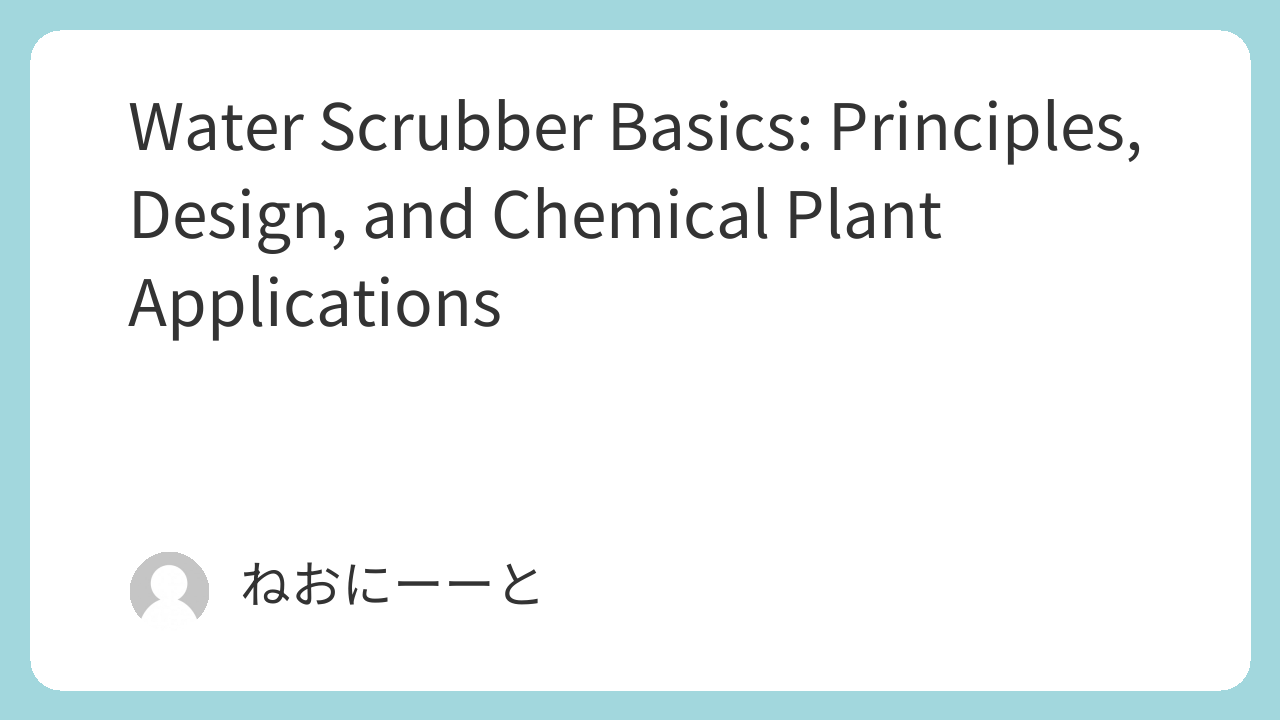In chemical plants, gas treatment is a critical step for ensuring both process safety and environmental compliance. One of the most effective methods for removing contaminants from exhaust gases is the water scrubber. This equipment is simple in principle but requires careful design and operation to achieve stable and efficient performance.
This article explains the basic concept, design considerations, and applications of water scrubbers in industrial settings.
1. What Is a Water Scrubber?
A water scrubber is a type of gas absorption equipment that uses water to remove contaminants such as dust, acid gases, or volatile components from exhaust streams.
- Typical structure: column with packing, spray nozzle, demister.
- Commonly used in chemical, petrochemical, and pharmaceutical plants.
2. Operating Principle
- Contaminated gas flows upward, while water flows downward (counter-current).
- Impurities are absorbed or trapped by the water.
- Clean gas exits from the top, wastewater is discharged from the bottom.
3. Key Design Parameters
- Gas flow rate and liquid flow rate
- Contact area (packing or spray type)
- Pressure drop
- Removal efficiency depending on target components
4. Applications in Chemical Plants
- Acid gas removal (HCl, SO₂, NH₃, etc.)
- Dust removal in exhaust lines
- Emergency vent treatment
- Pre-treatment before releasing to atmosphere
5. Advantages and Limitations
Advantages:
- Simple design, relatively low cost
- Effective for soluble gases and particulates
- Flexible for different gas types
Limitations:
- Wastewater treatment required
- Limited performance for low-solubility gases (e.g., CO₂, CH₄)
✅ Conclusion
Water scrubbers are a practical and reliable solution for many chemical plant exhaust treatment needs. While the principle is simple, careful design and operation are essential to achieve high removal efficiency and stable plant operation.
For engineers, mastering scrubber design means not only improving environmental performance but also ensuring compliance with regulations and workplace safety.

Comments